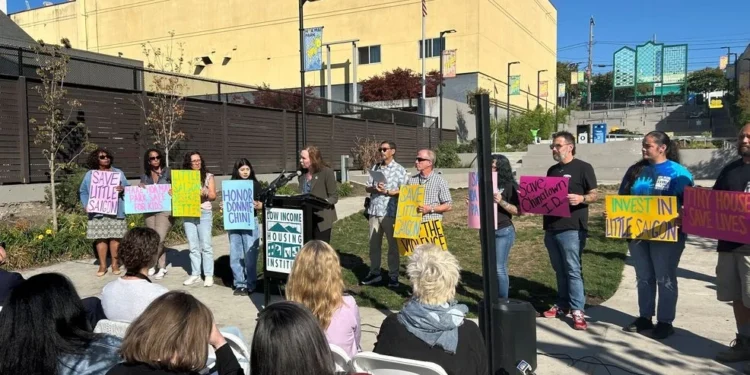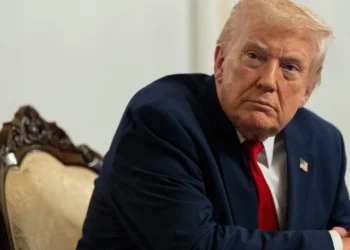Community leaders in Seattle’s Little Saigon neighborhood unveiled a comprehensive 15-point public safety plan Tuesday, demanding immediate action to address persistent drug activity and street crime that continues overwhelming local resources.
Former Seattle City Councilmember Tanya Woo, speaking at Hoa Mai Park, described the daily challenges facing the Chinatown-International District. “We still see about 100 people on a daily basis along 12th and Jackson engaged in drug use and illegal street vending,” Woo said. “We just need some sort of relief for our small businesses.”
The plan emerged from collaboration between Woo, the International District Rotary, and the Low-Income Housing Institute, reflecting community frustration with existing responses to neighborhood conditions.
Seattle City Council President Sara Nelson acknowledged the inadequacy of current efforts. “Today is not a time when every elected official should stand up here and talk about what they’ve already done because clearly it’s not enough,” Nelson stated during the press conference.
Key recommendations include establishing a community safety office at 12th Avenue and Jackson Street, increasing police patrols in alleys and side streets, and enhancing enforcement against illegal weapons, drug activities, and stolen goods vendors.
The plan also calls for adding eight tiny house villages and shelters throughout Seattle, increased affordable housing funding in the Chinatown-International District, and financial assistance for crime-impacted small businesses.
More immediate measures propose a six-month closure of Hoa Mai Park for cleanup and drug activity deterrence, temporary fencing along portions of 12th Avenue to end illegal vending, and relocating Metro bus stops from the 12th and Jackson intersection.
LIHI Executive Director Sharon Lee suggested opening storefronts where police and outreach workers could operate collaboratively. “We think it would be ideal to open up one of the storefronts so that the police department and all the outreach workers can be there,” Lee explained.
Seattle Fire Chief Harold Scoggins reported expanded department presence addressing the fentanyl crisis, including administering buprenorphine to stabilize overdose patients and facilitate treatment conversations.
A recent pop-up clinic exceeded expectations, with 33 clients receiving initial buprenorphine injections and more than half continuing with subsequent doses. One client began methadone treatment through the program.
The plan seeks $20 million from Governor Bob Ferguson for community preservation using sales tax revenues from House Bill 1408, plus approximately $10 million from Seattle for additional tiny house villages.
Chief Public Safety Officer Natalie Walton-Anderson cited progress statistics, including 24 percent fewer 911 calls, 32 percent reduction in thefts, and 60 percent decrease in robberies compared to August 2024.
“This data shows that we’re making progress, but people still need to feel safe,” Walton-Anderson said, acknowledging the gap between statistics and community perception.
The timing coincides with budget deliberations at city, county, and state levels, with Little Saigon advocates seeking inclusion in funding discussions.
Additional speakers included City Attorney Ann Davison, CARE Department Chief Amy Barden, and several political candidates, demonstrating broad political attention to neighborhood concerns.
The comprehensive approach reflects community recognition that policing alone cannot address underlying issues driving crime and disorder in the area.







